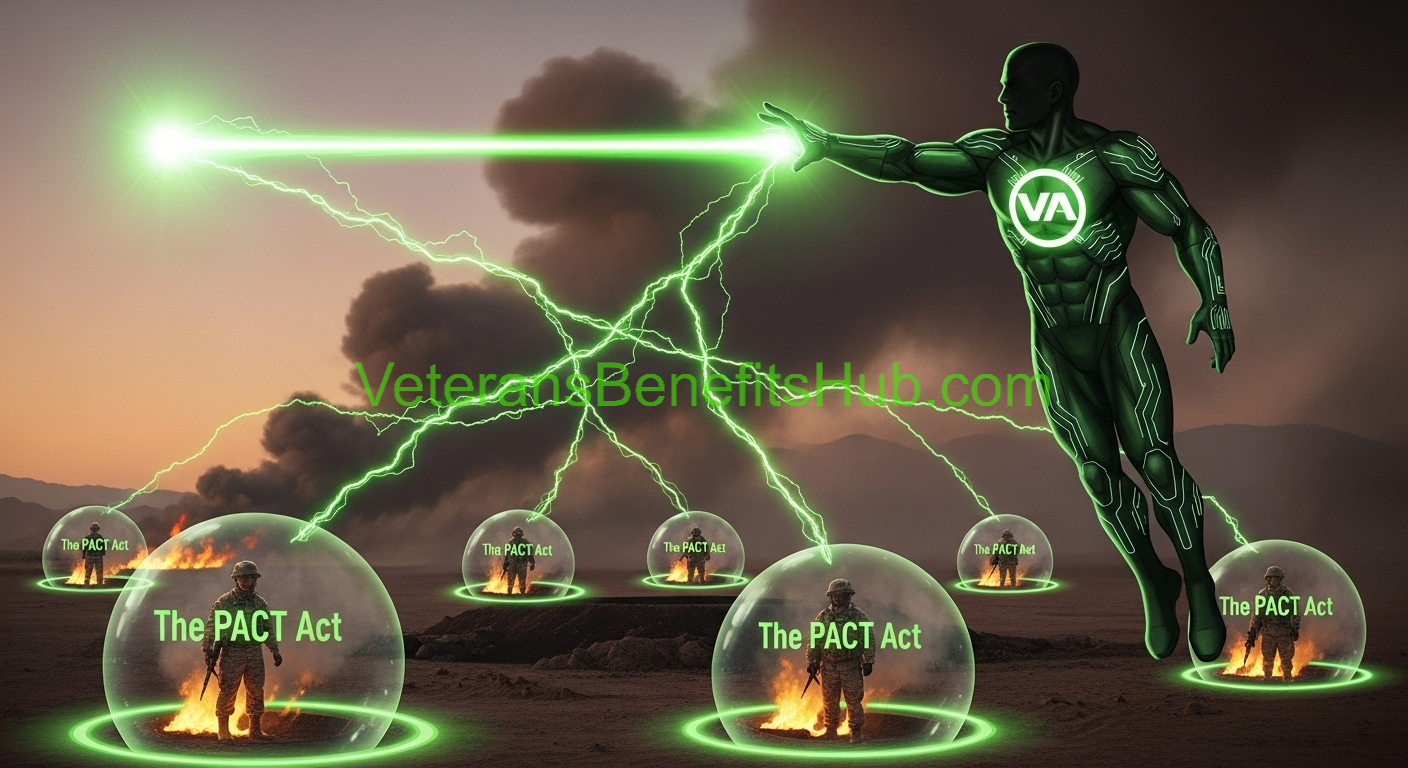Veterans! Navigating TERA and Presumptive VA Disability Claims: The Role of Evidence

The Final Step in a Proven Five-Part VA Claims Process: Presumptive Conditions and Toxic Exposure (TERRA) Claims
This is the final article in a five-part series covering the essential steps veterans can follow to be properly rated by the VA. These steps reflect common practices used by claim consultants and legal professionals, including a reputable VA claims law firm. The process includes:
- Increases
- Secondaries
- Denials
- New Claims
- Presumptive and Toxic Exposure (TERRA) Claims
This article focuses on the fifth and final step—presumptive and TERRA claims. Although these are discussed together here, they are distinct in process and evidence requirements.
TERRA Claims: Toxic Exposure Risk Activity
TERRA claims are not presumptive. They require the establishment of service connection through either direct or secondary pathways. TERRA stands for Toxic Exposure Risk Activity and includes exposures such as burn pits, JP8 fuel, asbestos, and herbicides. This type of claim is most commonly seen among Gulf War veterans and early Iraq deployments (e.g., 2003–2007), though instances extend to later service members as well.
Common conditions connected to TERRA include sleep apnea, GERD, neurological disorders, and—less commonly—musculoskeletal issues. To support a TERRA claim, the veteran must prove the exposure occurred during service. Documentation such as service records, personal statements, and corroborating evidence from fellow service members can significantly strengthen the claim.
Evidence strategies for TERRA claims should reflect the severity and proximity of the exposure. For example, a veteran who stirred burn pit waste weekly during deployment should describe that in detail—frequency, duration, tasks performed, and whether any protective equipment was used. These details help establish a stronger connection between the exposure and the resulting condition.
Since TERRA claims require a medical opinion, a nexus letter from a qualified medical provider linking the exposure to the diagnosis is often critical. These claims are complex and typically benefit from assistance by a reputable VA claims law firm or experienced claims professional.
Presumptive Conditions
Presumptive conditions differ significantly from TERRA claims. They do not require an opinion linking the condition to military service. Instead, the veteran must meet predefined criteria such as time, location of service, and a current diagnosis.
For example, under the PACT Act, veterans who served in qualifying regions during certain timeframes may be presumed to have been exposed to toxic substances. If the veteran has a condition on the presumptive list and served in the appropriate location during the specified time, the VA presumes the condition is service-connected.
Examples include:
- Vietnam veterans exposed to Agent Orange (e.g., served in Vietnam between January 9, 1962, and May 7, 1975, or within 12 nautical miles of the coast).
- Gulf War and Post-9/11 veterans who served in Southwest Asia or Afghanistan after September 19, 2001.
- Chronic conditions such as asthma, sinusitis, rhinitis, and various cancers now included as presumptive under recent legislation.
For many of these, the only documentation needed is proof of service in the specified location and a current diagnosis of the presumptive condition. The time criteria and the region of deployment are crucial in these claims. Some conditions must manifest within a specific time after separation from service (e.g., one year), while others may qualify regardless of when the symptoms appear.
Presumptive conditions related to toxic exposure are outlined in the VA’s official lists, which are updated periodically. As of January 8, 2025, new conditions such as acute and chronic leukemias, multiple myelomas, and various urinary and genitourinary cancers have been added.
Comparing TERRA and Presumptive Claims
The main difference is the burden of proof. Presumptive claims require minimal additional evidence once the criteria are met. TERRA claims, however, require a more comprehensive presentation of exposure and often depend on a well-supported medical opinion.
Veterans and advocates are encouraged to align their evidence to the theory of service connection applicable to their case—direct, secondary, or presumptive—and adjust their documentation accordingly.
Conclusion
This article concludes a five-part guide on how veterans can navigate the VA claims process. The steps—Increases, Secondaries, Denials, New Claims, and now Presumptive & TERRA—form a comprehensive approach veterans can use to optimize their rating and benefits.
Each of these steps reflects strategies often used by experienced legal professionals and veteran service advocates. While individual claims vary, understanding the foundations of these processes can provide veterans with a stronger position when applying for or appealing VA decisions.
Disclaimer
This content is for informational purposes only and should not be considered legal advice. While our contributor, who is an attorney, has provided insights based on professional experience, portions of this content may be opinionated. Veterans are encouraged to consult with a qualified representative or attorney for case-specific guidance.
This is the final entry in a five-part series on the VA claims process.